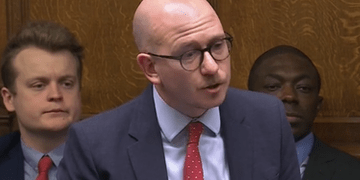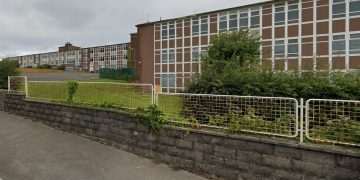Figures obtained by Scottish Labour revealed that patients are now waiting nearly ten minutes longer for blood clots to be removed than they were in 2018.
The SNP has been accused of “letting the clock run down on stroke patients” after average waits for treatment racked up to more than two hours.
Figures obtained by Scottish Labour revealed that patients are now waiting nearly ten minutes longer for blood clots to be removed than they were in 2018.
Removing blood clots quickly gives stroke patients a higher chance of recovery — so delays can mean the difference between years of living independently, or severe disability or death.
But the time it takes from calling an ambulance to receiving the treatment to remove the blood clot, known as thrombolysis, has risen to 126 minutes.
Patients in the remotest areas face waits of more than 30 minutes longer than the fastest urban health board.
READ MORE: SNP and Labour spending row as Nationalists claim £100bn ‘wasted’ since general electionREAD MORE: For Women Scotland launches legal action against Scottish Government on gender
Scottish Labour’s Health Spokesperson Jackie Baillie said: “These figures are a stark reminder that under the SNP stroke patients face a postcode lottery.
“Modern technology has the potential to transform the lives of stroke survivors, yet after nearly two decades in power the SNP can’t keep up with services elsewhere.
“The SNP is letting the clock run down on stroke patients — Scottish Labour will invest in our NHS and ensure patients get the treatment they need.”
Overall, the proportion of stroke patients receiving clot-busting thrombolysis within 30 minutes fell in half of the 14 health boards.
No patients in the Borders, Shetland, Orkney, or the Western Isles received thrombolysis in 2024, compared to more than a quarter in Tayside and Forth Valley.
In the Borders, patients faced on average two and a half hours’ wait between calling an ambulance and receiving thrombolysis.
The average wait in Orkney, Shetland and the Western Isles was also over two and a half hours.
The figure for Highland was two hours and 25 minutes, while Dumfries and Galloway was two hours and 22 minutes.
More urban health boards had much shorter waiting times. The shortest was Forth Valley, which was one hour and 55 minutes.
In NHS Lothian, the waiting time was one hour 58 minutes. Tayside was two hours and one minute, while Ayrshire & Arran and Fife were both two hours and two minutes.
The figures come as stroke charities urged the SNP Government to provide a 24/7 service for thrombectomies.
This is a procedure for quickly removing blood clots that is offered round the clock in England but is not available anywhere in Scotland after 9pm.
This means that for 11 of every 24 hours, people suffering a stroke have no immediate option of a thrombectomy.
Public Health Minister Jenni Minto said: “Between 2022 and 2024 the number of patients able to access thrombectomy treatment from NHS Scotland almost doubled. More patients are receiving the standards of care in the stroke care bundle.
“There is more to do and we will continue to increase access to these procedures. We are grateful to teams across Scotland for their excellent work in delivering and expanding services. We will continue to work with health boards to ensure they drive up standards of care they provide.
“We want to make sure people who have had a stroke receive the best possible care as quickly as possible to enable them to live longer, healthier and more independent lives.”
To sign up to the Daily Record Politics newsletter, click here



















































